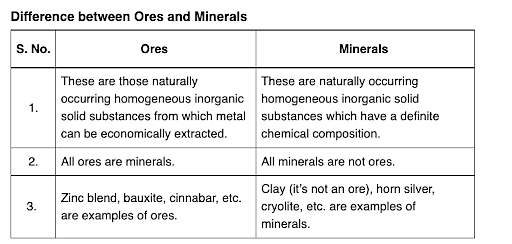Question:
Cast iron is used for the manufacture of :
Cast iron is used for the manufacture of :
Updated On: Apr 24, 2025
- wrought iron and pig iron
- wrought iron and steel
- wrought iron, pig iron and steel
- pig iron, scrap iron and steel
Hide Solution
Verified By Collegedunia
The Correct Option is B
Solution and Explanation
Cast iron is used for manufacturing of wrought iron and steel.
Was this answer helpful?
0
0
Top Questions on General Principles and Processes of Isolation of Elements
- In the extraction of iron using blast furnace to remove the impurity (X), chemical (Y) is added to the ore. X and Y are respectively
- TS EAMCET - 2025
- Chemistry
- General Principles and Processes of Isolation of Elements
- What is used for the Thermite Reaction?
- BCECE - 2025
- Chemistry
- General Principles and Processes of Isolation of Elements
- Which of the following compounds is used to cover the surface of a metallic object to prevent corrosion?
- KEAM - 2025
- Chemistry
- General Principles and Processes of Isolation of Elements
- On reaction of Lead Sulphide with dilute nitric acid which of the following is not formed ?
- JEE Main - 2024
- Chemistry
- General Principles and Processes of Isolation of Elements
- Electrometallurgical process is used for the extraction of which of the following metals?
- Bihar Board XII - 2024
- Chemistry
- General Principles and Processes of Isolation of Elements
View More Questions
Questions Asked in JEE Main exam
- Assume a living cell with 0.9%(\(w/w\)) of glucose solution (aqueous). This cell is immersed in another solution having equal mole fraction of glucose and water. (Consider the data up to first decimal place only) The cell will:
- JEE Main - 2025
- osmosis
Given below are two statements:
Statement (I):
 are isomeric compounds.
are isomeric compounds.
Statement (II): are functional group isomers.
are functional group isomers.
In the light of the above statements, choose the correct answer from the options given below:- JEE Main - 2025
- Isomerism
- Let \( [x] \) denote the greatest integer function, and let \( m \) and \( n \) respectively be the numbers of the points, where the function \( f(x) = [x] + |x - 2| \), \( -2<x<3 \), is not continuous and not differentiable. Then \( m + n \) is equal to:
- JEE Main - 2025
- Differential Equations
The effect of temperature on the spontaneity of reactions are represented as: Which of the following is correct?

- JEE Main - 2025
- Thermodynamics and Work Done
- The electric field of an electromagnetic wave in free space is \[ \vec{E} = 57 \cos \left[7.5 \times 10^6 t - 5 \times 10^{-3} (3x + 4y)\right] \left( 4\hat{i} - 3\hat{j} \right) \, \text{N/C}. \] The associated magnetic field in Tesla is:
- JEE Main - 2025
- Electromagnetic Induction and Inductance
View More Questions
Concepts Used:
General Principles and Processes of Isolation of Elements
What are Ores and Minerals?
Minerals are the naturally occurring, homogeneous inorganic solid substances. They are having a definite chemical composition and crystalline structure, hardness and color. For example, copper pyrite, calamine, etc.

Impurities in an ore are called gauge. The removal of a gauge from the ore is called concentration ore.
Several steps are involved in the extraction of pure metal from ores. Major steps are as follows –
- Concentration of the ore
- Isolation of the metal from its concentrated ore
- Purification of the metal